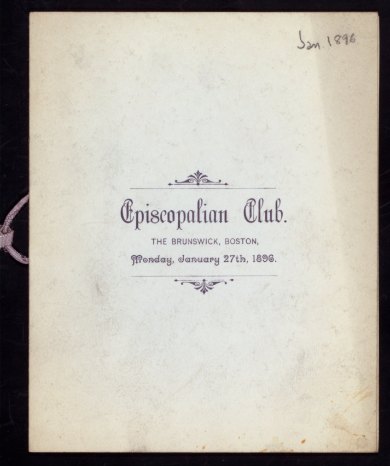THE Rev. Frank B. Wilson, D.D., rector of Christ Church, Eau Claire, Wis., was elected first Bishop of Eau Claire by an overwhelming majority of both clerical and lay votes on the first ballot, in the primary council of this diocese, held here yesterday. The election was made unanimous.
The council opened with the conciliar Mass in Christ Church, which is to be the cathedral of the diocese, celebrated by the Rt. Rev. Reginald H. Weller, D.D., Bishop of Fond du Lac, assisted by the Rt. Rev. William Walter Webb, D.D., Bishop of Milwaukee, as gospeller, and the Rt. Rev. B. F. P. Ivins, D.D., Bishop Coadjutor of Milwaukee, as epistoler. After a brief adjournment for breakfast, the council was formally opened in the parish house by Bishop Ivins, and organized with the election of the Rev. R. D. Vinter as chairman pro tern. Following the adoption of a diocesan constitution and canons, the delegates adjourned to the church for the episcopal election.
An informal nominating ballot gave Dr. Wilson forty-eight of the seventy-five votes cast, with six each for the Rev. Frederick D. Butler of St. Paul and the Ven. Milo B. Goodall of Bice Lake, Wis.; five for the Ven. William H. Wolfe of Tomah, Wis.; four for the Rev. Francis P. Keicher of Hudson, Wis.; and the balance scattering. The first formal ballot followed, revealing a decisive majority for Dr. Wilson, and the election was thereupon made unanimous.
Following the signing of the testimonials of election, and a luncheon served by the women of the parish in the guild hall, the council reconvened and elected the following:
Standing Committee: The Rev. Robert D. Vinter, La Crosse, chairman; S. G. Moon, Eau Claire, secretary; the Rev. H. S. Kuth, the Rev. H. E. Chase, the Rev. F. R. Keicher, and Messrs. B. S. Mellinger, Gunner Anderson, and Judge Baldwin.
The trustees of the diocese were also elected, consisting of the Bishop ex-officio, and Messrs. G. Van Steenwyk, Otto Von Schroder, A. R. Owen, and F. S. Thompson. The Rev. A. H. Head was elected secretary of the diocese, and Otto Von Schrader, treasurer; R. W. Owen was elected missionary treasurer, and G. O. Linderman was appointed chancellor of the diocese. Examining chaplains appointed were the Rev. R. D. Vinter and the Ven. W. F. Wolfe.
Some two hundred and fifty people were present at the diocesan dinner, presided over by Claire Crocker of Spooner, Wis. Speakers included the Bishop-elect, the Bishops of Milwaukee and Fond du Lac, and the Bishop Coadjutor of Milwaukee. At the speakers’ table also were Mrs. Mary B. Dulany, whose generous gift to the episcopal endowment fund made the erection of the diocese financially possible, and who was presented with a large bouquet, and the Ven. Henry E. Chase, veteran missionary, whose work years ago as archdeacon in northern Wisconsin laid the foundations of the diocese of Eau Claire. Fr. Chase has been in ill health for a number of years, and when he made his appearance at the dinner, he was given a spontaneous and prolonged ovation.
The Bishop-elect of Eau Claire was born March 21, 1885, in Kittanning, Pa., the son of the Rev. and Mrs. William White. He received his B.A. degree from Hobart College in 1907, his S.T.D. in 1923, and his B.D. in 1923 from General Theological Seminary. He was ordained deacon in 1910 by the Rt. Rev. John Chanler White, D.D., Bishop of Springfield, and priest in the same year by the Bishop of Chicago.
Dr. Wilson was married in 1911 to Miss Marie Louise Walker. He was priest-in-charge of St. Ambrose’s Church, Chicago Heights, Ill., 1910-13; rector, St. Andrew’s Church, Chicago, 1913-15; rector, St. Augustine’s, Wilmette, Ill., 1915-19; secretary-treasurer, diocesan board of religious education, 1913-17; associate secretary, national Field Department, 1924-25; director of diocesan publicity, 1925-26; delegate to the provincial synod, 1910-19-26; served as chaplain with the 86th Division, U. S. Army, and with the 332d Infantry, 1917-19; was field secretary of the Nation-wide Campaign, and was a deputy to the General Conventions of 1922, 1925, and 1928. He is the author of several books, including Contrasts in the Character of Christ, What a Churchman Ought to Know, Religion, and The Divine Commission, besides editor of the Witness.
The Living Church, November 22, 1928.

 California
California